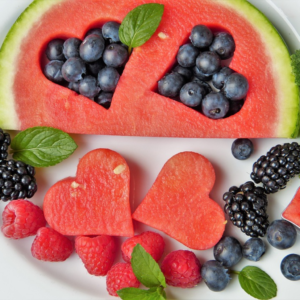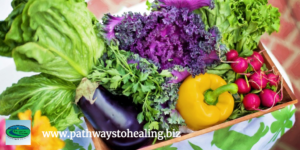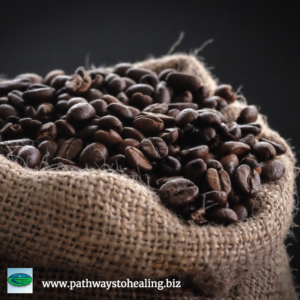By: Dr. Alyssa Musgrove
According to the National Coffee Association, 83% of American adults drink an average of two cups of coffee a day. In fact, the United States spends about $4 billion a year importing coffee, and coffee is considered the world’s second most valuable trade commodity behind petroleum.
 So, coffee definitely has a wide fan base. But is coffee good for your health?
So, coffee definitely has a wide fan base. But is coffee good for your health?
Coffee contains caffeine, which acts as a stimulant for the central nervous system. The amount of caffeine in coffee varies dramatically depending on the bean used and the method by which the coffee is brewed. Dark roasts have a stronger, bolder flavor, but contains about 15 to 20 percent less caffeine than light roasts of the same variety. This is because the roasting process of the bean reduces the caffeine content.
An average eight-ounce cup of brewed coffee from ground beans contains about 90-100 milligrams (mg) of caffeine compared to a cup of green tea that has about 40-50 mg or Coca-Cola, which has 45 mg. One-ounce of espresso contains about 30-50 mg of caffeine. Decaf coffee in the United States must be 97 percent caffeine-free, meaning an eight ounce cup will still have 5-10 milligrams of caffeine.
Coffee can increase mental and physical performance and temporarily restore alertness, thereby increasing motivation and productivity. Coffee also increases blood flow to the brain, thereby increasing brain activity. Coffee can also be a performance enhancer and can contribute to higher stamina and concentration. One report, published by the School of Sport and Exercise Science, found athletic performance times were significantly faster among adult men who drank coffee prior to exercising compared to the placebo group, who drank decaf.
Coffee also contains a high source of antioxidants. When antioxidants are increased in the blood, it helps fight free radicals that can be damaging to the body. Coffee contains polyphenols, which are the same kind of antioxidants found in red wine and cocoa. These antioxidants may attribute to lowering oxidative stress and inflammation, potentially lowering your risk for disease.
 There are potential drawbacks to coffee that are worth considering. The caffeine in coffee can leave some people feeling anxious and jittery. Additionally, consuming too much caffeine can have addictive side effects. Personal tolerance to caffeine is another factor to consider. For those prone to sleep-related problems, anxiety and heart palpitations, coffee might need to be off limits. People with low stomach acid or those who battle heartburn symptoms might be bothered by coffee, as well.
There are potential drawbacks to coffee that are worth considering. The caffeine in coffee can leave some people feeling anxious and jittery. Additionally, consuming too much caffeine can have addictive side effects. Personal tolerance to caffeine is another factor to consider. For those prone to sleep-related problems, anxiety and heart palpitations, coffee might need to be off limits. People with low stomach acid or those who battle heartburn symptoms might be bothered by coffee, as well.
Since coffee contains caffeine, which alters your physiology and mood, it also has the ability to impact hormones and neurotransmitter function. Many people use coffee to mask fatigue and exhaustion from working long, tiring days. When caffeine is used to keep you going, or you depend on it to wake up, it may disguise underlying fatigue that may be coming from another health condition or end up causing one from lack of rest. Sometimes your body needs rest and time to reboot when you are worn out.
Black coffee is a better choice than energy drinks, soda, sweet teas and juices. Black coffee contains no sugar or carbs and minimal calories. Usually it’s what people add to their coffee that makes it unhealthy. If you do drink coffee, try to have it black or sweetened with organic cane sugar or stevia. For those who prefer milk in their coffee, reach for “no sugar added” nut milks (almond, cashew etc.), coconut milk or rice milk.
“Bulletproof coffee” has recently been gaining in popularity. To make bulletproof coffee, take 1 to 2 tablespoons of grass-fed butter or ghee, 1 to 2 tablespoons of coconut oil and 1 to 2 cups of hot coffee and mix in a blender for 20-30 seconds until frothy. Bulletproof coffee can trigger weight loss by activating ketosis, a metabolic state generated by lack of carbs that stimulates the body to burn fat as a source of energy. This coffee mixture can also be a great way to get healthy fats first thing in the morning, suppress hunger or decrease cravings while providing energy without the sugar spike and crash.
 Some people maintain cold-brewed coffee is healthier than regular, hot-brewed coffee. Cold-brew coffee is made by steeping coffee grounds in room temperature, or cold water, for an extended period of time (8-24 hours). Advocates claim cold brew coffee is up to 60% less acidic than typical hot coffee. Less acidic coffee can have a smoother taste and be better for teeth enamel and stomach acid balance. It also keeps fresh in the refrigerator for up to two weeks.
Some people maintain cold-brewed coffee is healthier than regular, hot-brewed coffee. Cold-brew coffee is made by steeping coffee grounds in room temperature, or cold water, for an extended period of time (8-24 hours). Advocates claim cold brew coffee is up to 60% less acidic than typical hot coffee. Less acidic coffee can have a smoother taste and be better for teeth enamel and stomach acid balance. It also keeps fresh in the refrigerator for up to two weeks.
Nitro coffee is cold brewed coffee put into a keg and infused with nitrogen gas. It offers that frothy and bubbly taste straight from the tap and does not contain (or really need) milk or sugar. Nitro coffee is less acidic than traditional hot coffee and includes about 30 percent more caffeine. Nitro coffee is becoming widely available in bottles and cans, so you can enjoy this trendy coffee at home or in the office.
Whether or not coffee is good for your health depends on your own body and how well you are able to tolerate it. If you do not have any issues consuming it, it’s safe to indulge in a cup.
Pathways to Healing specializes in holistic chiropractic care. Dr. Alyssa Musgrove draws on a variety of techniques, including chiropractic, kinesiology, nutrition, food allergy testing and lifestyle counseling to assist clients in achieving optimal health and wellness in one setting. Pathways to Healing is located at 1022 Founders Row, Lake Oconee Village, Greensboro. The office can be reached at 706-454-2040.



